|
Some photos from the workshop. Thanks to all participants and to We’re All Bats for having us. 29 July 2023 To participate email [email protected] with the name of the workshop https://www.wereallbats.co.uk/dover During the workshop participants will build a noise device with contact mic and synth circuit which they can build and solder. This can be customised with a variety of objects for making noise and we will supply a spinner toy or other toys as a kinetic component. We will also have a selection of circuits recycled from toys which participants can add to for lighting or other sound enhancements. We will bring a base for participants to work on but they are welcome to bring their own unique base if they like. Ideas for a base are tin lid, strong fabric, old box, strong cardboard, wood etc, so long as the surface is around 15-20cm long. Participants will learn about piezoelectric contact microphones, soldering electronic circuits using the 'paper circuit' technique. They will explore the creative use of amplification, feedback and light-controlled sound in experimental music and sound art. All materials are supplied but participants are encouraged to bring their own soldering iron if they have one and any items they would like to add to their device to personalise it. Here are some examples of DIY synths mae by us using contact mics and other components to make a unique instrument. INSPIRATION
The circuit we will be building is developed from the ’noise567’, originally designed Christian Hemmo in 2001. An NE567 Tone Decoder IC is wired up in a completely unorthodox manner to create a very noisy and strange squarewave generator / ring modulator. Through experimenting and circuit-bending we have changed component values to find our own sound, added a built-in contact microphone to amplify springs and other physical objects, and added a light-dependent resistor to allow for theremin-like pitch control using handheld torches, flashing light toys, strobe lights, sunlight and shadows, or any other way to modulate the amount of light hitting the sensor. The circuit is built using the ‘paper circuit’ technique. Instead of a conventional manufactured printed circuit board with copper tracks, the circuit layout is printed on thin card. The component legs are poked through pinholes in the card and twisted together on the other side, then soldered. This very accessible technique was pioneered by experimental synth designer Peter Blasser, who publishes many unusual sound circuits in this format, for example the ‘Rungling’ featured in the book ‘Handmade Electronic Music' The spinner toy component is inspired by a gig we did under the name of 4’33’society which was led by Phillip Raymond Goodman where members of the group were invited to create methods to create sounds and noise with a fidget spinner. |
AuthorLisa McKendrick Archives
May 2024
Categories |
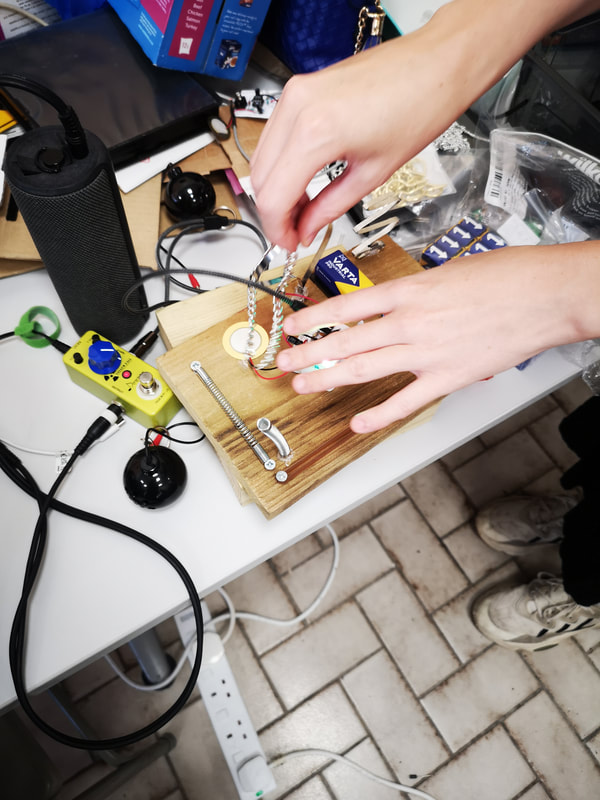
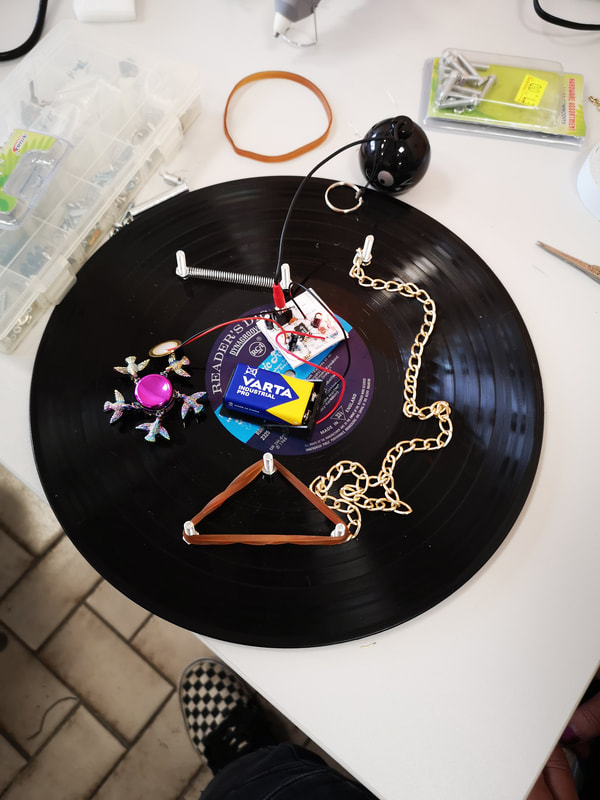
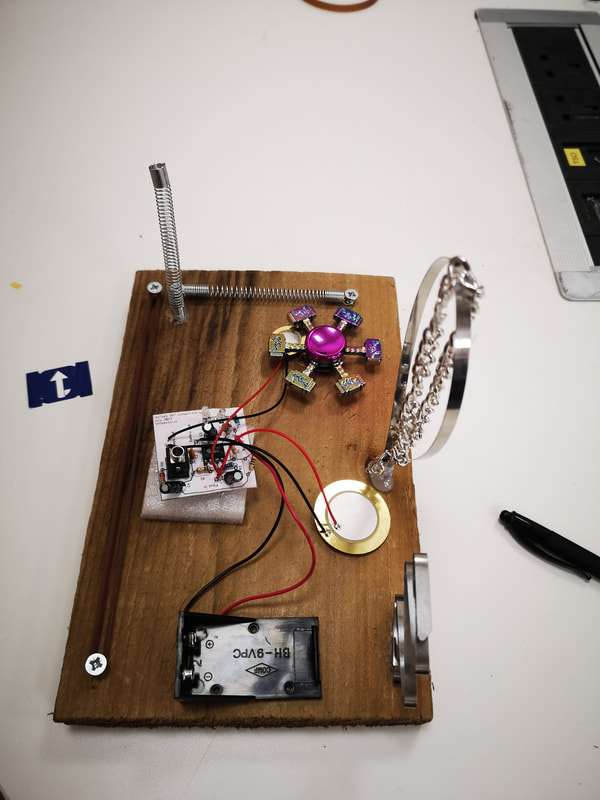
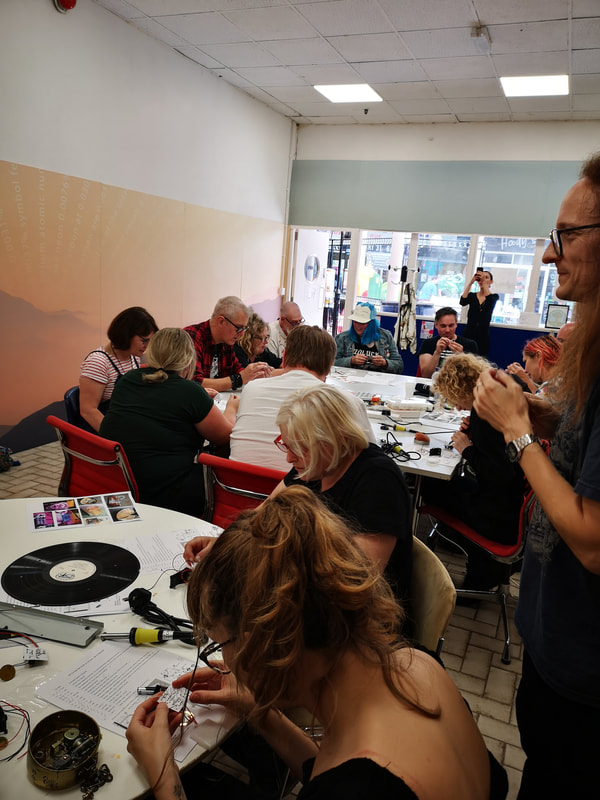
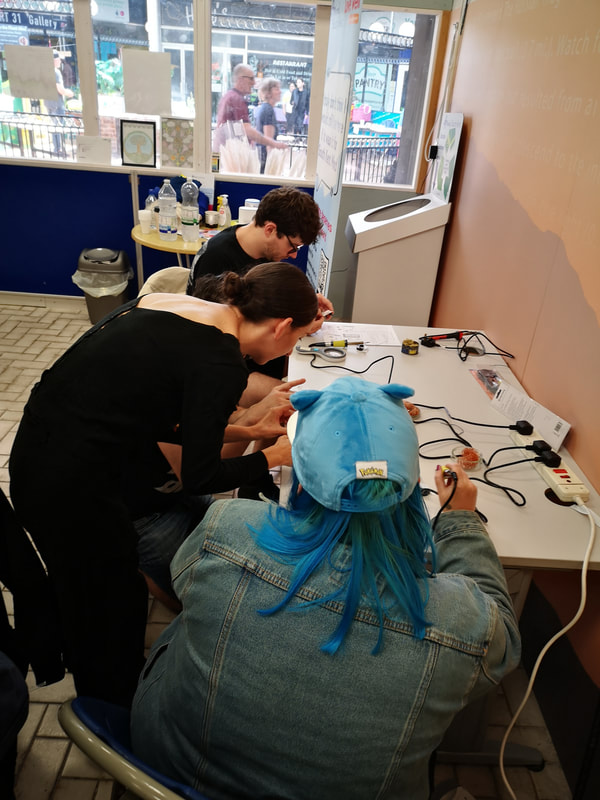
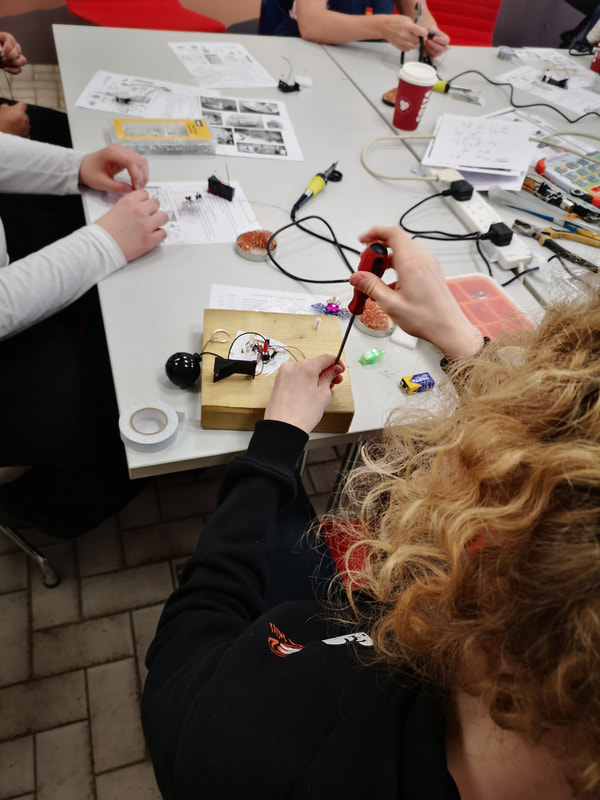
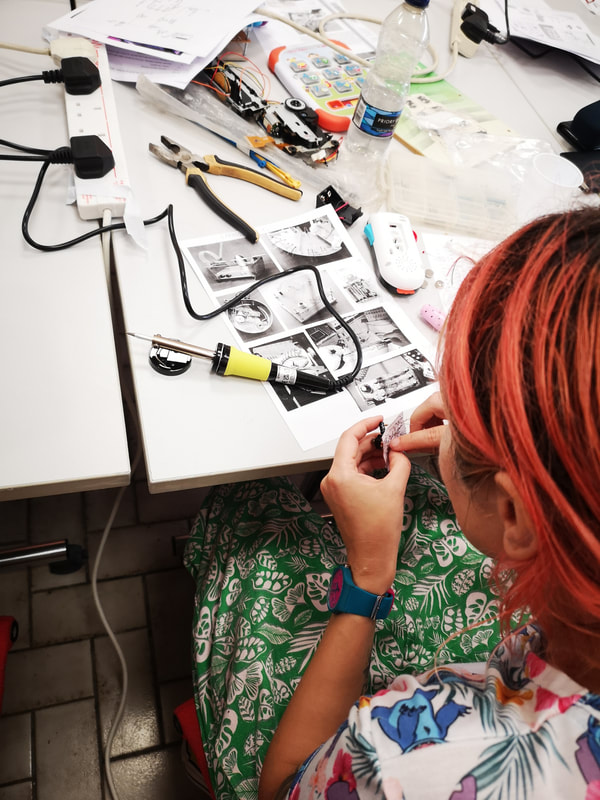
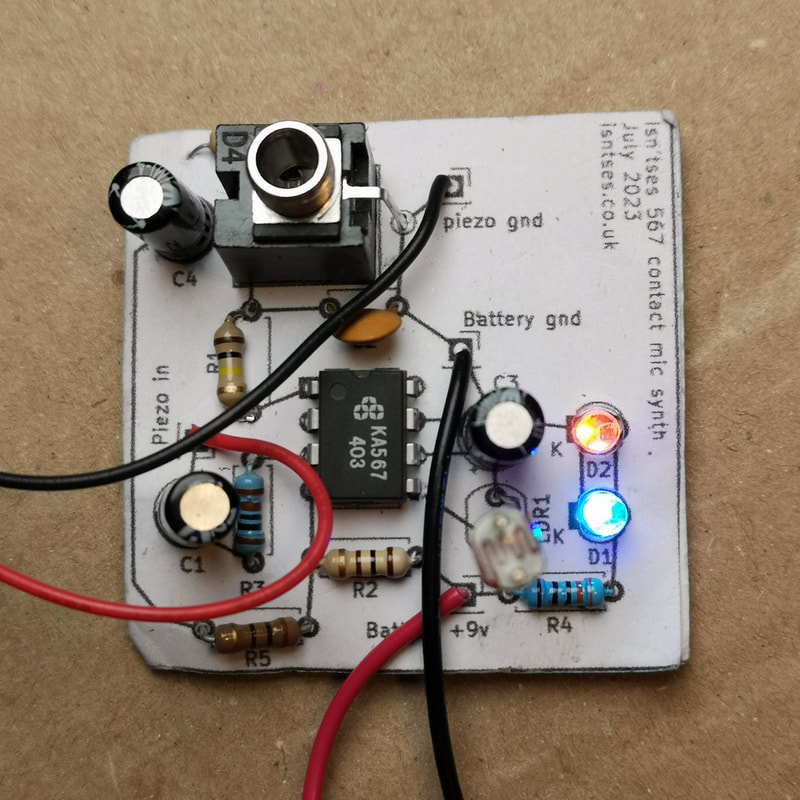
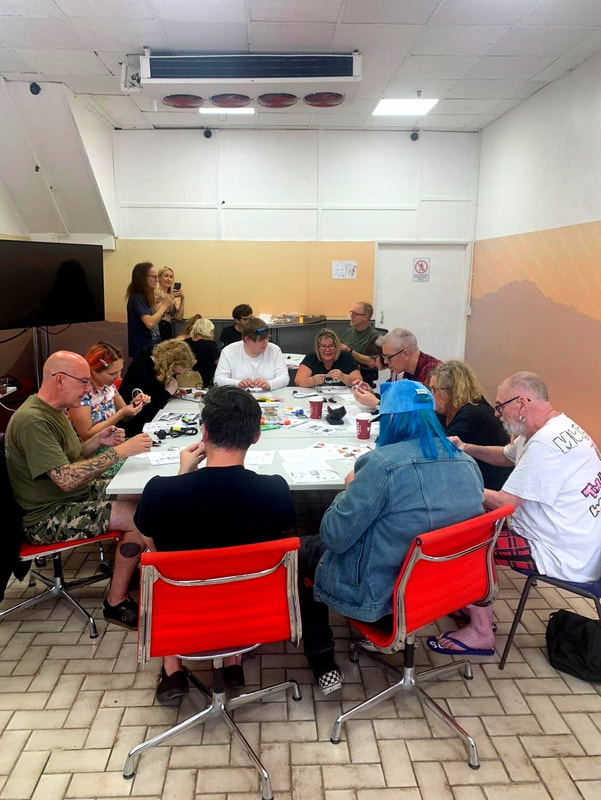
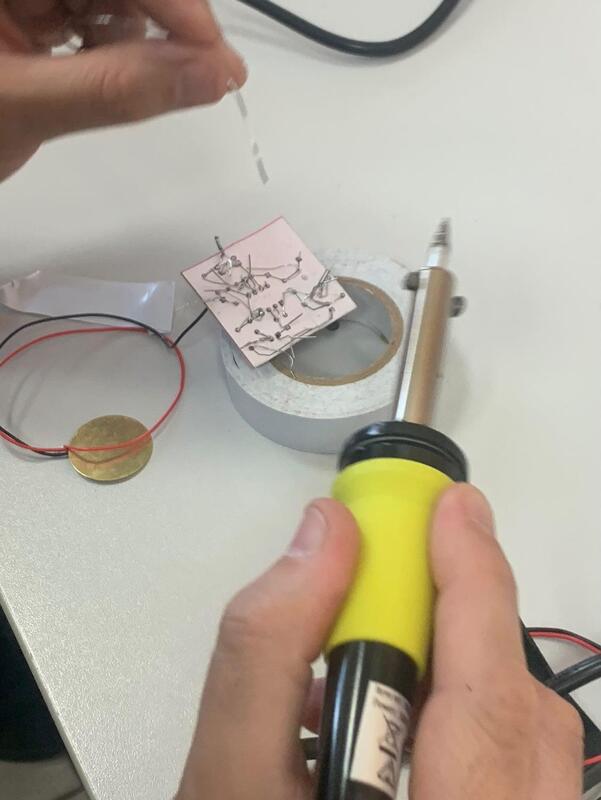
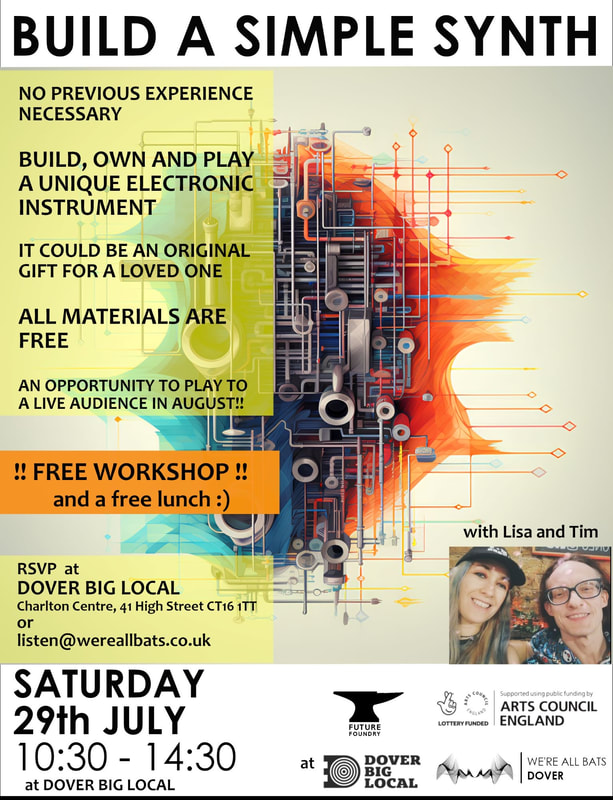
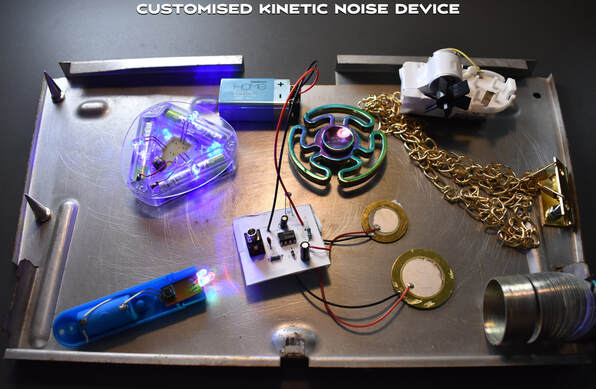
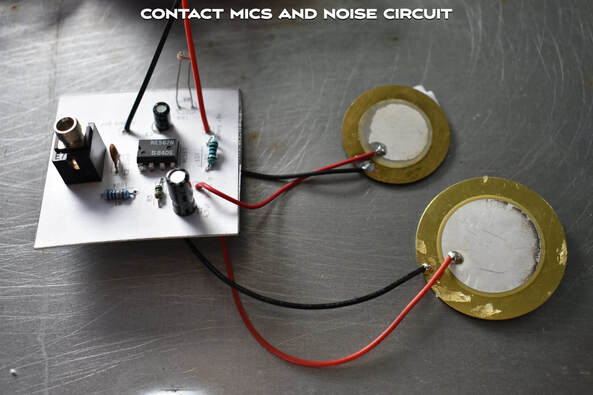
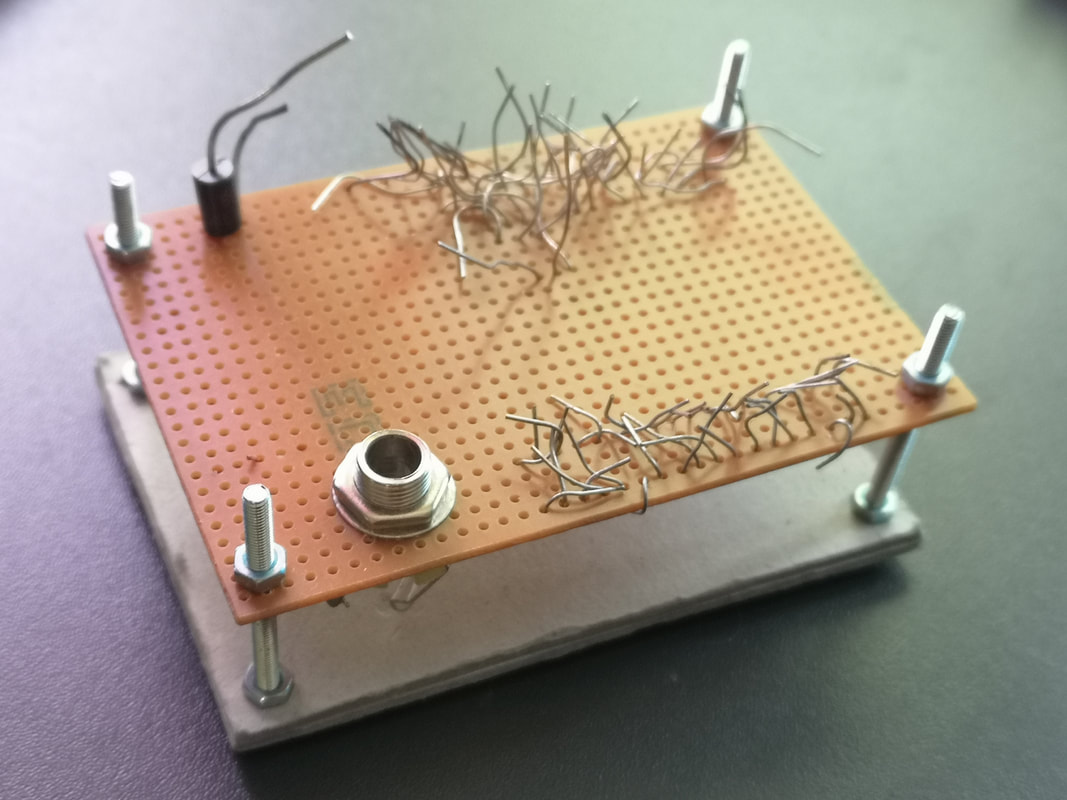
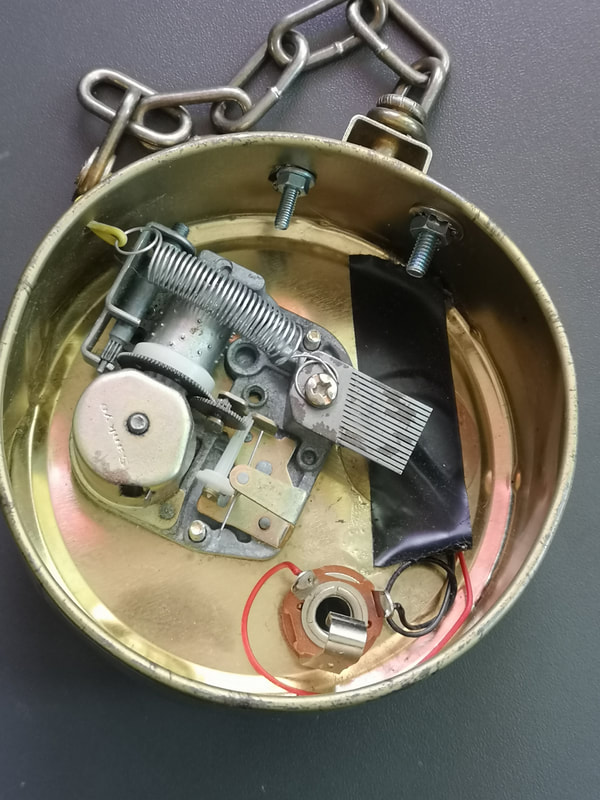
 RSS Feed
RSS Feed
